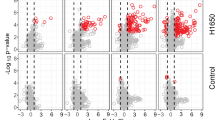Abstract
The aim of the investigation was to enhance the screening diagnosis of epithelial tissue malignant tumors, the molecular relationship between blood plasma protein fractions, and carcinogenesis tissue markers in renal and bladder cancer. Blood plasma of 87 cancer patients, not previously subjected to antitumor treatment, and 9 patients with psoriasis was studied. Blood plasma of 52 healthy people was used as control. Biochemical parameters were evaluated on the analyzer “KoneLab 20 / 20i” (Finland). Statistical analysis was performed using the software Statistica 6.0. Network construction of protein-protein interactions was performed by means of Cytoscape software, using databases STRING, BioGrid, SwissPro. It has been shown that in patients with malignant tumors of epithelial tissues, compared to the control group (healthy people), albumin and β-globulins levels were significantly reduced and α1-globulin and γ-globulins were increased. Comparison of protein fractions in cancer and psoriasis patients showed the most expressed differences for β-globulin fraction; their level was increased in psoriasis, and, conversely, decreased in cancer, with a significant reduction, starting from the early stages of cancer. Tissue markers common to renal and bladder cancer were discovered, and they were, dynamin 2 (DNM2), tyrosine 3-monooxygenase/tryptophan 5-monooxygenase activation protein, gamma polypeptide (YWHAG), plasminogen receptor, C-terminal lysine transmembrane protein (PLGRKT), cytoplasmic FMR1 interacting protein 2 (CYFIP2), glutamate dehydrogenase 1(GLUD1), and antigen-presenting proteins (CD1a, CD1b). Analysis of the relationship between individual blood plasma β-globulin proteins and identified tissue markers showed the greatest number of protein-protein interactions for proteins with reduced level in malignant tumors: transferrin had 11-interactor proteins, as well as angiostatin had only 4. The involvement of protein markers interacting with individual proteins of blood plasma β-globulin fractions in the signaling pathways that regulate apoptosis and cell proliferation was shown. Changes in the content of β-globulins of blood plasma in malignant tumors of epithelial tissues, including renal and epithelial cancer are suggested to be considered as specific pathogenic criteria and serve as an additional diagnostic feature.





Similar content being viewed by others
References
Bedard, P. L., Krzyzanowska, M. K., Pintilie, M., Tannock, I. F. (2007). Cancer prevention and control in the Eastern Mediterranean region: the need for a public health approach. Hematology/Oncology and Stem Cell Therapy, 1(1), 44–52.
Buys, S. S., Partridge, E., Black, A., et al. (2011). Effect of screening on ovarian cancer mortality: the prostate, lung, colorectal and ovarian (PLCO) cancer screening randomized controlled trial. JAMA, 305(22), 2295–2303.
Frewland, J. (2015). A clearer view of the molecular complexity of clear cell renal cell carcinoma. Annual Review of Pathology: Mechanisms of Disease, 10, 263–289.
Grützmann, R. (2014). Molecular diagnostics and treatment of pancreatic cancer, 3–9.
Chow, H., Devesa, S. S., Warren, J. L., Fraumeni, J. F. (1999). Rising incidence of renal cell cancer in the United States. JAMA, 281(17), 1628–1631.
Hofmann, J.N., Corley, D.A., Zhao, W.K., Colt, J.S., Shuch, B., Chow. W. H., & Purdue, M.P. (2014). Chronic kidney disease and risk of renal cell carcinoma: differences by race. Epidemiology.
Jin, Y., Dai, M. S., Lu, S. Z., Xu, Y., Luo, Z., Zhao, Y., et al. (2006). 14-3-3gamma binds to MDMX that is phosphorylated by UV-activated Chk1, resulting in p53 activation. EMBO Journal, 25, 1207–1218.
Juozaitytė, E., et al. (2014). Guidelines for diagnostics and treatment of aromatase inhibitor-induced bone loss in women with breast cancer. A consensus of Lithuanian medical oncologists, radiation. Medicina, 50(4), 197–203.
Jhaveri, K. D., & Rosner, M. H. (2015). Chronic Renal Disease, 571–584.
Khatib, O., & Aljurf, M. (2014). All cancers combined key facts. Cancer Research UK.
Kidney cancer (2014) In World cancer report 2014. In B. W. Stewart (Ed.) CP wild. pp. 2–9. Lyon, Fr.: Int. Agency Res. Cancer/World Health Organ.
Kisluk, J., et al. (2014). Proteomics biomarkers for non-small cell lung cancer. Journal of Pharmaceutical and Biomedical Analysis, 101, 40–49.
Lighvani, S., Baik, N., Diggs, J. E., Khaldoyanidi, S., Parmer, R. J., Miles, L. A. (2011). Regulation of macrophage migration by a novel plasminogen receptor Plg-R KT. Blood, 118, 5622–5630.
Hock, L. M., et.al. Increasing incidence of all stages of kidney cancer in the last 2 decades in the United States: an analysis of surveillance, epidemiology and end result program data. The Journal of Urology, 167(1), 257–60.
Li P., et.al. Regional geographic variations in kidney cancer incidence rates in European countries. European Urology. Available online 18 November 2014.
Yotsukura, S., & Mamitsuka, H. Evaluation of serum-based cancer biomarkers: A brief review from a clinical and computational viewpoint. Critical Reviews in Oncology/Hematology. Corrected Proof. Available online 14 October 2014.
Thompson, H. M., Skop, A. R., Euteneuer, U., Meyer, B. J., McNiven, M. A. (2002). The large GTPase dynamin associates with the spindle midzone and is required for cytokinesis. Current Biology, 12, 2111–2117.
Compliance with Ethical Standards
Funding
This study was supported by Regional Foundation for Basic Research grants Regional grant of government of Nizhny Novgorod region in the fields of science, technology and engineering for 2014.
Conflict of Interest
There is no topic specific conflict of interest related to the authors of this study.
Research involving Human Participants and/or Animals
Conducting of this clinical examination eliminates the risk for patients, because evaluation of patient’s metabolism, clinical and diagnostic testing are standard common manipulations. Our research complies with international and ethical standards set forth in the Declaration of Helsinki of the World Medical Association’s “Ethical Principles for Medical Research Involving Human Subjects”.
Informed Consent
All participants involved into medical research gave their official signed informed consent to all medical examinations.
Author information
Authors and Affiliations
Corresponding author
Rights and permissions
About this article
Cite this article
Erlykina, E.I., Obukhova, L.M., Yazykova, A.B. et al. Molecular Mechanisms of Relationship Between Blood Plasma Beta-globulins and Protein Markers of Renal and Bladder Cancer. BioNanoSci. 5, 84–90 (2015). https://doi.org/10.1007/s12668-015-0165-x
Published:
Issue Date:
DOI: https://doi.org/10.1007/s12668-015-0165-x




